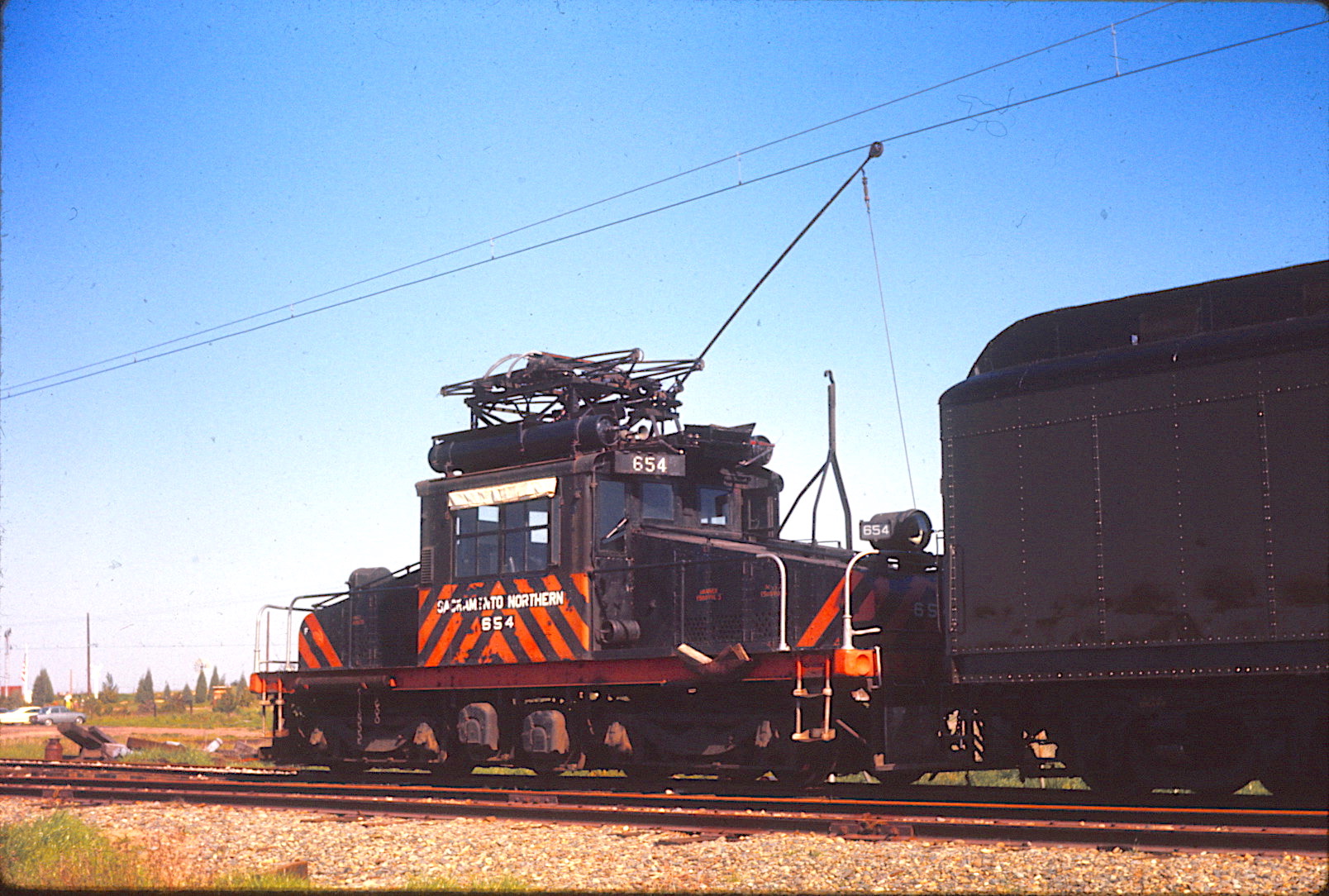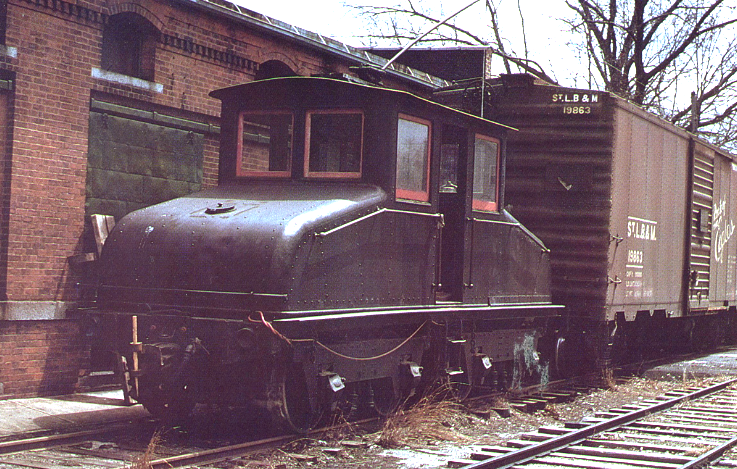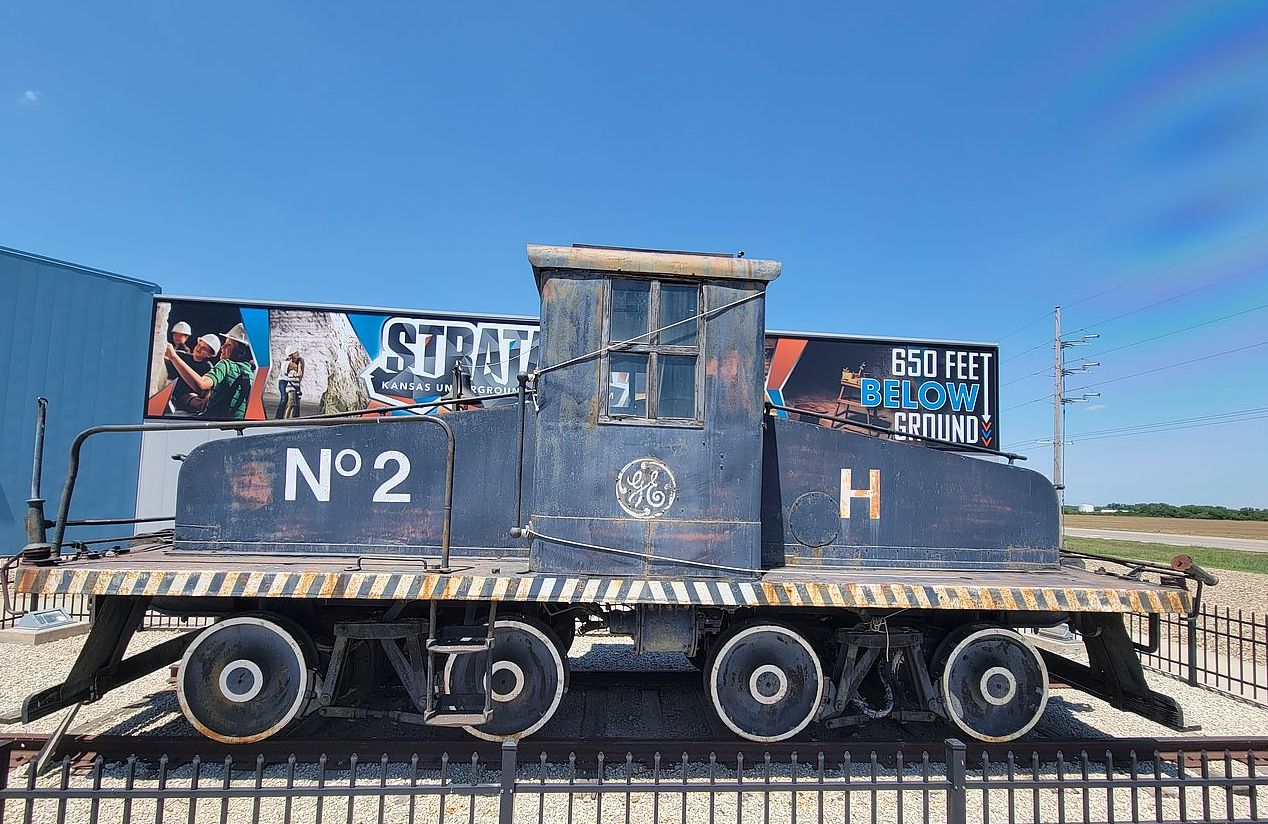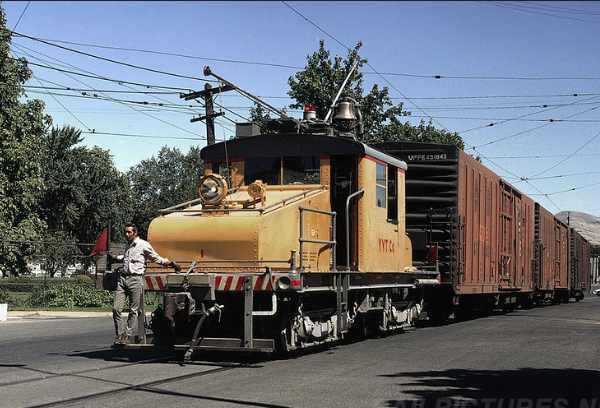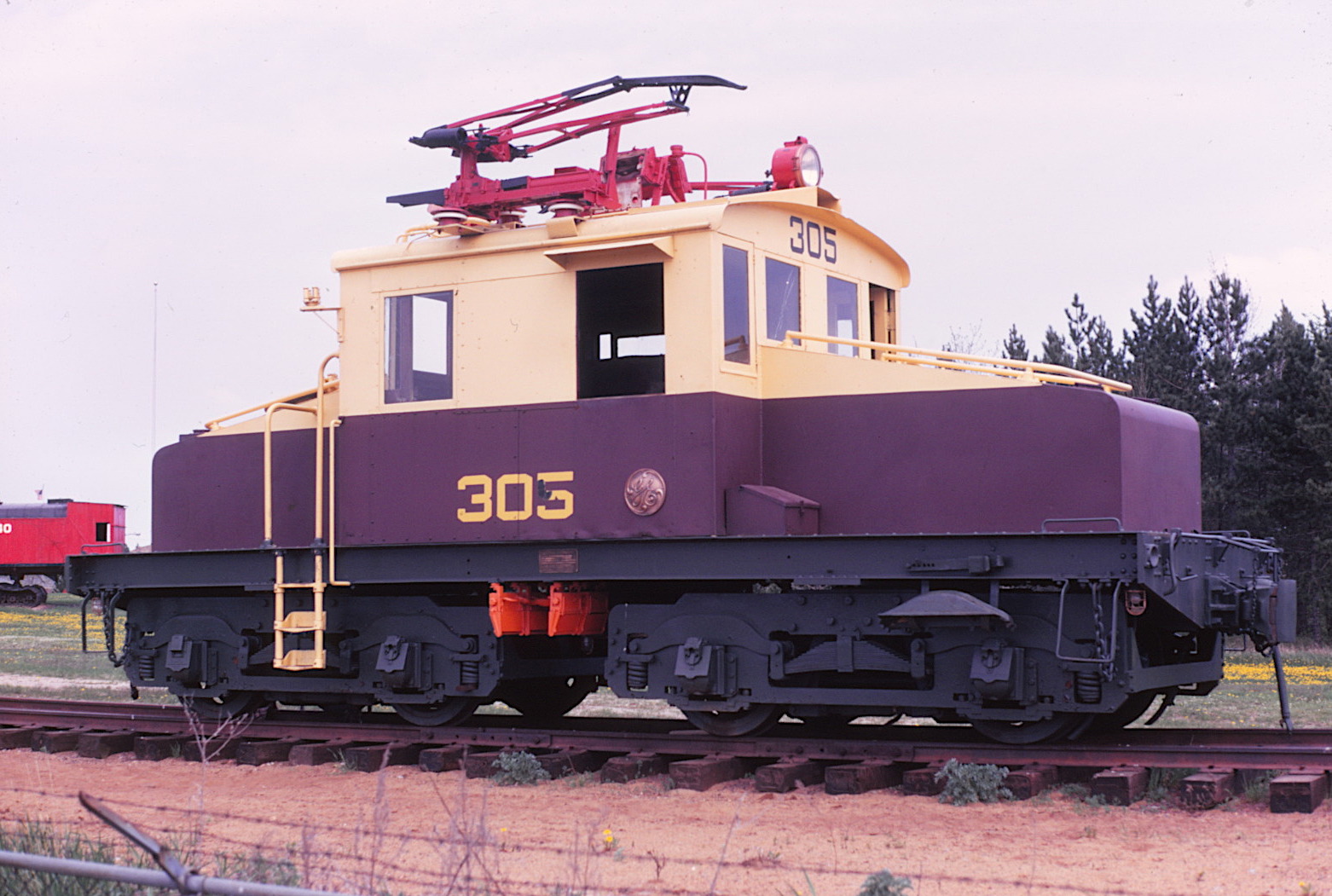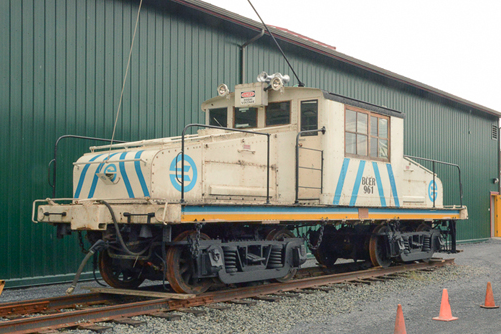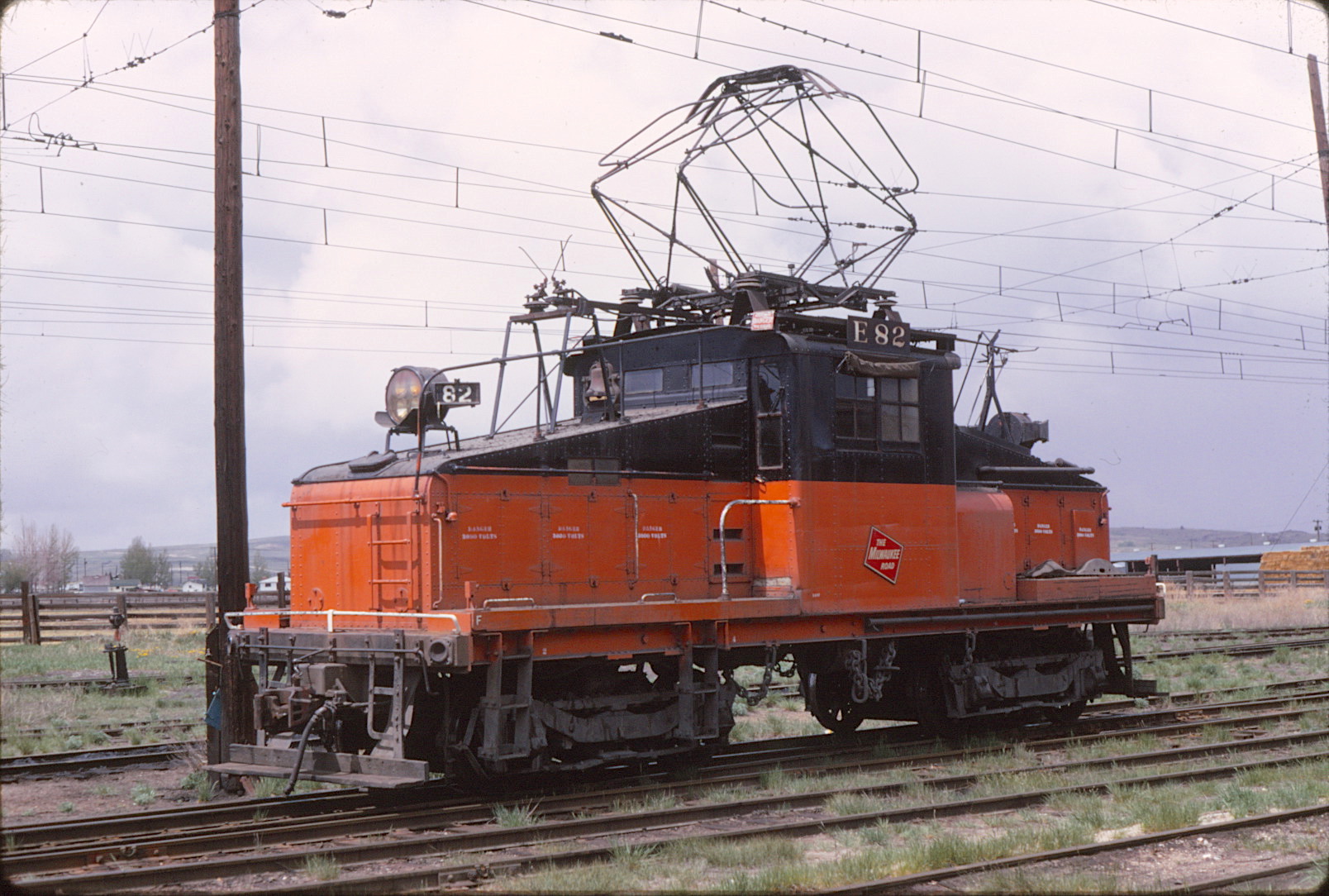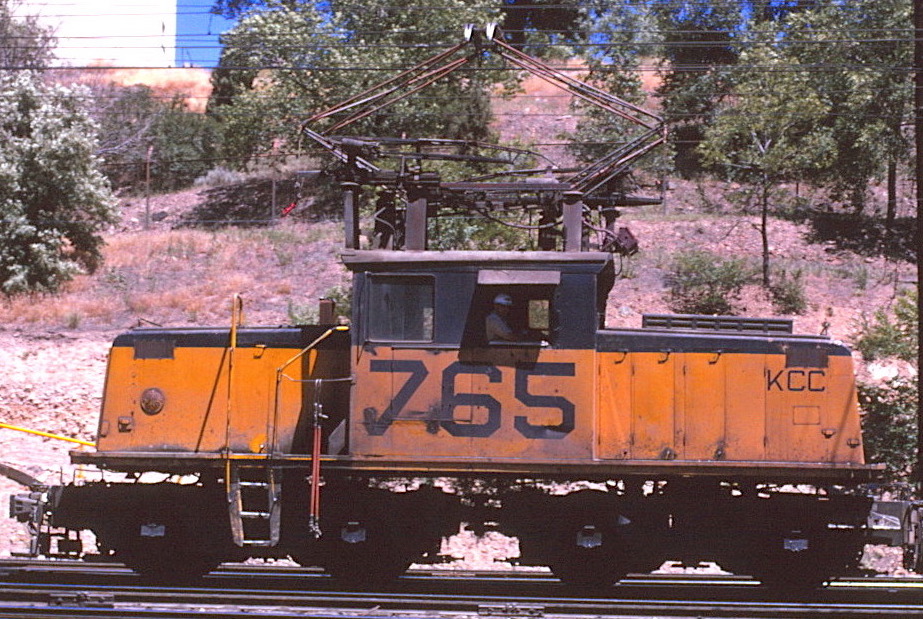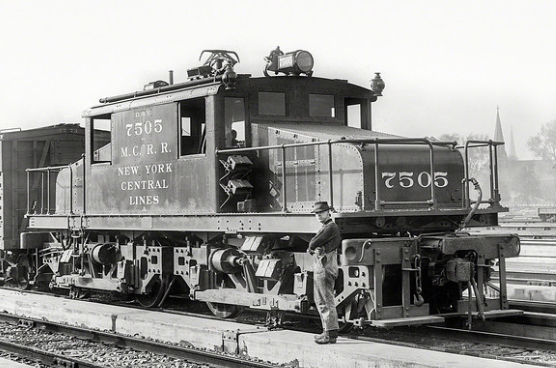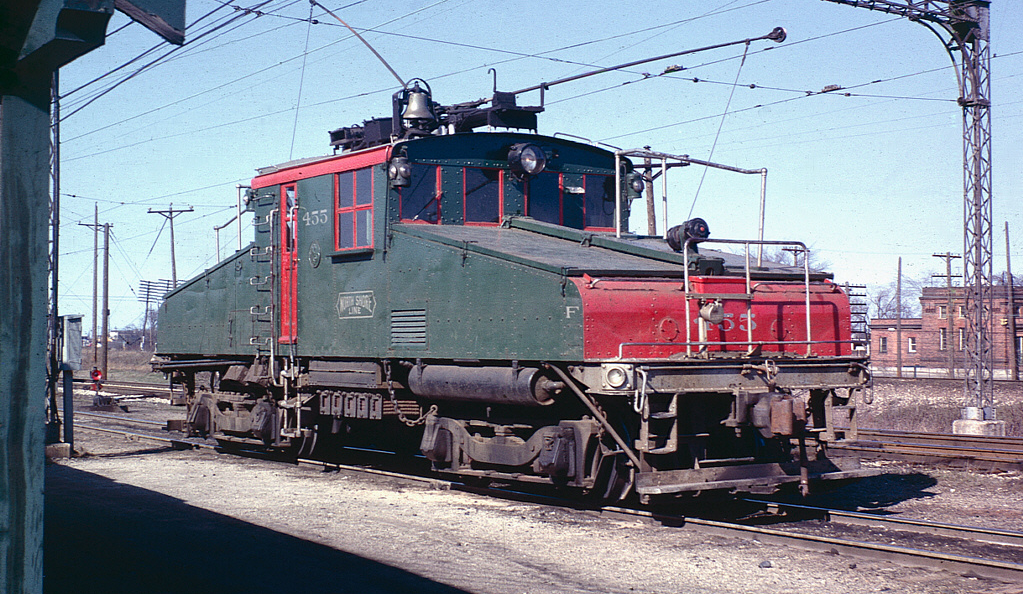GE Steeple Cab Electric Locomotives
Sacramento Northern 1000-hp Electric #654 on 22 February 1970 (W.L.Hammond photo / R.Craig collection) | |||||
|---|---|---|---|---|---|
|
Nearly four decades have passed since General Electric or any other domestic manufacturer
has delivered new electric locomotives for hauling freight in daily U.S. or Canadian revenue
service. A stark difference when contrasted to the the forty years leading up to World War
II. Electrified rail lines and interurbans during that period played an important role in
the economic growth of many North American communities, and the steeple cab locomotive
was integral to that part of transportation history.
The Baldwin Locomotive Works and General Electric (the two foremost builders of electric freight
motors) perspective on the history of the Steeple cab differ as might be expected, but GE is
generally credited with building the first electric freight motor. Built in 1893, the 30-ton
4-wheel unit featured a steeple cab and entered service on the Manufacturers Railway in
Connecticut the following year.
Potential railway, interurban and industrial buyers had been slow to appreciate the full advantage
offered by the electric freight motor; there of course was also the issue of infrastructure
costs, even for direct current electrics. Although orders for new units materialized slowly,
the major builders by 1915 had expanded their product lines to include 40, 50, 60, 70 and even
85-ton electric freight motors. While GE could boast of having built the world's first straight-
electric railroad main line; Baldwin and its electrical controls /systems supplier Westinghouse
became the leading producer of electric locomotives. BLW had already been North America's
dominant steam engine manufacturer.
Early steeple cabs from both builders had a strong resemblance; best described by author and
historian, Wiliam D. Middleton. "The main frame was typically built with four longitudinal
steel channels, fastened to cast iron end frames or bumpers. The center cab and sloping hoods
at each end were fabricated from angle iron and sheet steel." End hoods were removable
without disturbing any equipment. GE sub-contracted the carbody and mechanical components
to American Locomotive Co (Alco), also a long-time steam engine builder, as well as GE
neighbor in Schenectady, NY. That relationship lasted nearly fifty years.
By 1907, BLW-built steeple cabs had transitioned to a much larger center cab, with two short
stubby nose hoods. Baldwin also adopted a model classification system predicated on locomotive
weight and horsepower (A, B, B-1, D and E). Meanwhile, the design of GE's standard steeple
cab went unchanged; thus it became much easier to differentiate between the two builders. GE's
model designations were a little more complicated, but provided a better description. Once
again the words of author Middleton, "A model 404-E-80-4GE206-A, represented a 4-0-4 or B-B
wheel arrangement, electric locomotive weighing 80,000 pounds and powered by four General
Electric 206-A traction motors."
Electric railway and interurban systems in general utilized a 600-volt, direct-current power
network; however as train size grew longer and heavier some rail operations converted to 750
or even 1200-volt power. On mainline railroads and heavy industrials a 3000-volt, direct-current
system was more commonplace.
By the 1930s, GE steeple cab production had fallen victim to the diesel-electric locomotive,
as had the steam engine. The few notable exceptions were GE 75 to 125-ton models built
for the mining industry.
Next month, the focus will be on Baldwin steeple cab production. |
|||||
* * * GE Steeple Cabs * * *
Built in 1894 for Cayadutta Railway, the loco was first to employ two, twin-axle swivel trucks. The small freight motor was retired in 1964 after serving on the Cayaduttta in New York and Ponema Textile Mills in Connecticut for more than six decades. Most pre-1900 GE-built steeple cabs featured a wide car-body, with extremely narrow footboards and operator access doors on both sides of the cab. (Photographer unknown) |
The Hutchinson & Northern #2 of 1919 is distinctive as being the first GE Locomotive to employee a "frame-less" truck. GE Engineers used several innovative and cost-cutting measures to replace or reconfigure conventional bearings, journals and equalizer bars. For more detailed description, please use the link at page bottom. ** (Ward Davis photo at Hutchinson, KS) | ||||||
By 1922, the car-body supplied by Alco had been expanded to provide for a more spacious area for motorman and equipment; plus end hoods were extended, as the photo of YVT #298 illustrates when contrasted to H&N #2. Air reservoir electrical equipment and control apparatus were installed under the long, sloping hoods. (Drew Jacksich photo) |
Hanna Mining #305 is commonly referred to as a side-pan (pantograph) steeple cab. Built in 1928, the 120,000-lb electric worked for the Minnesota-based mining company for 40 years. The eight-wheel locomotive was driven by a standard 600-volt system with four GE HM833B traction motors. (Keith Ardinger photo) |
||||||
|
|
||||||
|
|
||||||
|
Notes & Credits:
** More information on the frameless truck can be seen at Chuck Zeilers'Flickr account . . .
https://www.flickr.com/photos/chuckzeiler/24538880145/in/photolist-JEMocn-2aQwU6k-JmRAho-JCzU17-Doqb9r.
Reference sources:
| ||||||
